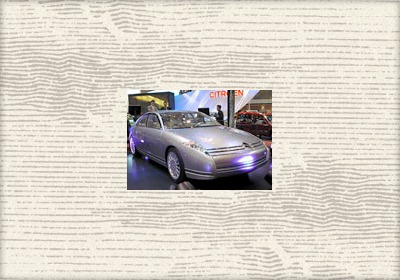First Sight: Citroën C4
Fri, 16 Jul 2004 The Citroen C4 is a new car that shall be formally unveiled at the Paris Motor Show in September as the replacement for the Xsara that has been quietly competing in the European C-class for six years.The C4 was previewed in Geneva with the C4 Sport (a WRX themed concept car based very closely on the production 3-door C4) and less directly with the C6 Lignage Citroen concept car of Geneva 1999 which introduced many of the new car's exterior and interior design themes on a larger vehicle concept.
Sitting between the C3 and C5 in Citroen's range, the C4 platform will also be shared by Citroen's partner Peugeot for the 307 replacement.
Specification
The C4 will initially be available as five and three door variants with different bodyshells; the 3 door having a convincingly coupe design identity despite seemingly sharing wheelbase, H-points and many other components with its more family image five door sibling. The range will be joined by an estate and an SUV type hybrid variant; a replacement for the Picasso mini MPV will also share its platform.
One of the most interesting features of the C4 is its industry first, fixed centred steering wheel boss. This enables more controls to be located on the steering wheel boss for improved ergonomics and a less cluttered IP control interface, and has given Citroen the opportunity to create an airbag that offers greater protection to the driver.
The car also has the option of an involuntary lane-departure warning system and directional headlamps - a feature not seen on a Citroen since 1975. Engines will range from 90hp to 180hp for petrol and 92hp to 138hp for diesel.
Design
Relative to its design heritage, the C4 continues the Citroen tradition of a long nose / cab forward profile that dates back to the 1957 DS, but lends itself well to designs that now have to pass pedestrian impact legislation, and the five door echoes the DLO and rear aspect of the C3.
Although seen on Citroen concept cars for the last three or four years, the C4 is the first production Citroen with the new corporate Down-Road-Graphic which is clearly defined by a lateral theme integrating the double chevron Citroen graphical mark, bumper and distinctive kinked lights.
The coupesque three door variant features a rear hatch with unusual glazing that extends seamlessly along the roof surface and then acutely downward at the rear in a way reminiscent of the second generation Honda CRX and the Citroen C-Airdream concept car of Paris 2002.
Conclusion
Citroen's design strategy for the C4 seems to be well targeted for the market; two hatchback variants that share expensive components but are clearly differentiated in their appeal towards the two core types of C-class buyer, a distinctively modern yet unchallenging design identity, a design that exudes both solidity and dynamism, and features that are innovative, relevant and appealing. For the more than three million people in Europe who buy this size of car, many for whom the Golf, Astra and Focus are too bland a taste the C4 looks like a very enticing proposition. Expect the C4 to sell like hot croissants!
By

